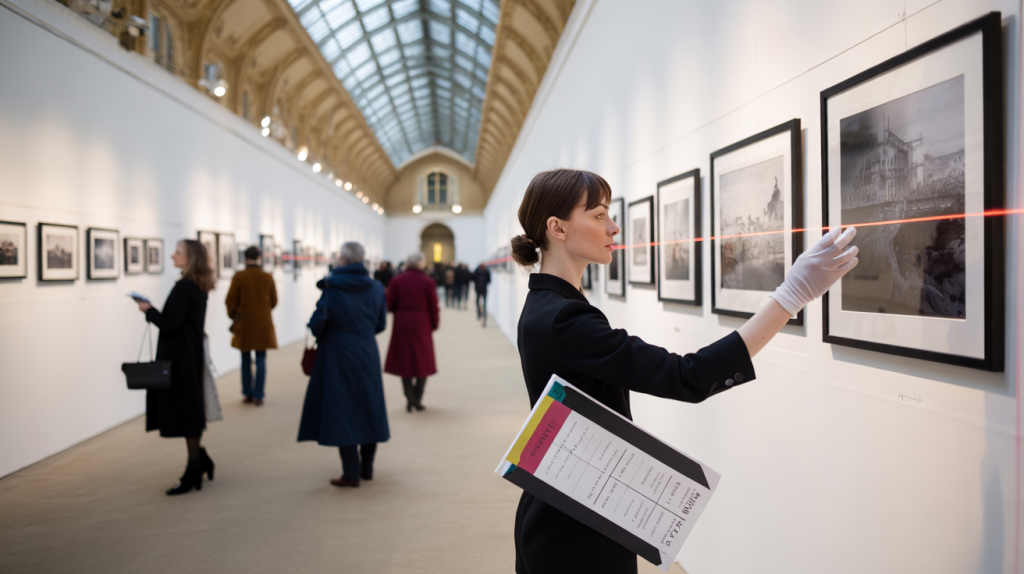Step into Paris Photo and the air changes. Light, bodies, prints everywhere. Then a curatorial hand quietly stitches the chaos into meaning, and a name starts circling in conversations: Devrim Bayar.
Here is the question most visitors whisper before the first booth: what exactly does a curator bring to a photography fair known for scale and speed. Paris Photo, founded in 1997 by Rik Gadella and now staged every November over four days, has built a reputation on galleries and publishers from many countries. The curated sections and programs act like a compass in this sea of images, and that is where a voice like Devrim Bayar matters.
Devrim Bayar, Paris Photo, and the role of a curatorial voice
The fair moves fast, but a curator slows the gaze. Devrim Bayar is often cited for a precise, readable way of sequencing images. Not just what to show but how to let images talk to each other, so visitors pick up a thread and follow it without noticing the join.
At a fair, that work looks different from a museum show. Space is tighter, time is shorter, noise is constant. A curator connected to Paris Photo shapes a section or a pathway, proposes a theme grounded in research, writes concise texts that do not overexplain, and negotiates with galleries so the selection feels alive and not simply a shopping list.
What a Paris Photo curator actually does behind the scenes
There is the visible part, of course, the hang. The invisible part counts just as much. Calls with galleries. Shortlists. Floor plans mapped to audience flow. Editing wall labels to a few lines. Aligning the program of talks with the artworks so ideas and images reinforce each other instead of competing.
Visitors often ask for a number to make sense of the scene. A broader market figure helps frame it: according to the Art Basel and UBS Art Market Report 2024, global art sales reached about 65 billion dollars in 2023, while the share of online sales jumped to around a quarter at the height of 2020 and has receded since. Fairs like Paris Photo sit in this context. A curator in that environment becomes a filter and a translator, reducing noise so a first look can turn into understanding.
Right, and then comes the human bit. A thoughtful curator anticipates fatigue, attention spans, the desire to be surprised once, then anchored again. The aim is to accomodate real bodies, not ideal visitors.
How to read a curated section by Devrim Bayar at Paris Photo
Start with proximity. Stand where the curator clearly wanted you to stand. The sightlines are not accidental, and the first pairing usually sets the thesis. Look for rhythm: small, then large; archival, then new; a pause, then a shock. If you sense a loop, you are meant to circle back rather than push forward.
Wall texts tend to be short on purpose. Read them, then test them against what you actually see. If a caption mentions labor, bodies, or time, scan the sequence for repeated gestures or materials. The point is to leave with a question sharpened, not a question erased.
- Pick one theme the curator flags and track it across three booths, not one.
- Ask gallerists for one work the curator insisted on including, then ask why.
- Photograph wall layouts to study the order later, not only the artworks.
- Plan two passes: a fast walk to map the room, a slow walk to read the edits.
Key facts, timelines, and what this means for your visit
Paris Photo has been a November anchor since 1997, created by Rik Gadella and organized today by RX France. The fair runs over four days, which means time pressure is built in. Curated sections exist to counter that pressure with clarity and coherence.
When a curator like Devrim Bayar is tied to a sector or thematic route, the selection tends to foreground how images circulate in society, not only how they look. That can mean more attention to publishing, to installation choices that break the grid, to artists who work with archives rather than single iconic shots.
The practical takeaway is simple. Use the curated part as your map. Enter there first, note three artists or series that anchor the theme, then let that map guide the rest of your day. It keeps the visit focused and opens better conversations with galleries because you arrive with context, not just a question mark.
One last thing. Paris Photo is a fair, yes, but it reads like a living textbook when a curator threads the pages. Follow that thread, and the images start to speak in full sentences.
